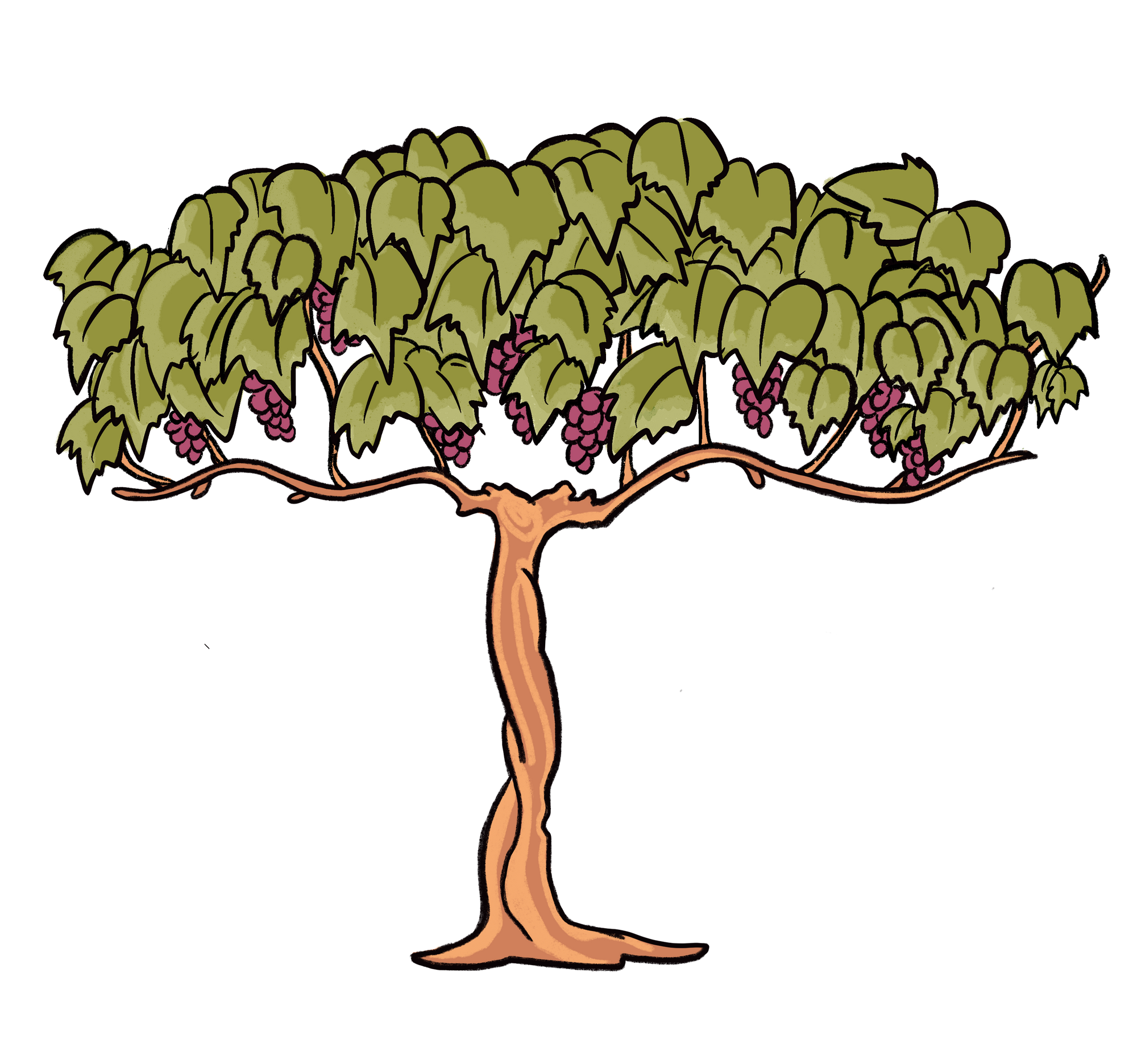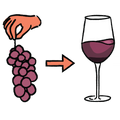

The best winemakers say wine is made in the vineyard - discover just how a vineyard works.

Like most true wine enthusiasts, we are just as fascinated by the winemaking process as we are by opening a bottle and consuming it. From a distance, it always seems to be something of a magical practice, and the evocative image of winemakers knee-deep in grapes and stomping around in barrels, is as irresistible as it is unrealistic. Obviously, modern winemaking doesn’t involve quite as much of that sort of thing as we’d perhaps like. Nonetheless, winemaking remains to this day full of interesting quirks, amazing skills, and age-old techniques which keep that sense of wonder alive.
A good example of this sort of thing revolves around exactly when the winemaker decides that his or her grapes are ripe for the plucking. As everybody knows, this is a vital part of the overall winemaking process, and the chosen moment is absolutely crucial to just how good the resulting wine ends up being. Pick too early, and the grapes will be overly acidic and tannic. Pick just a day too late, and the sugars will have developed to such a point that the wines will end up sweet and flabby. Finding that perfect moment is something which requires a lifetime of practice and expertise, and winemakers all over the world use a variety of methods and techniques for figuring out exactly when that method comes.
Interestingly, ‘ripeness’ when it comes to grapes is far from a fixed concept. Choosing when to pick your fruit from the vines depends on a massive number of different factors, which primarily revolve around the grape variety being cultivated and the type of wine the winemaker is trying to make. We'll examine some of these factors and look at the life cycle of the vine to get a feel for how the grapes are grown.
When to harvest--red
Most expert winemakers will rely on a combination of taste, skill, awareness, and scientific testing to define exactly when the day (or even hour) for harvest should take place. It’s remarkable that in the 21st century, winemakers are still using time-honoured techniques to figure out the all-important beginning of the harvesting season, and then using modern scientific methods to sharpen and bolster such techniques, rather than it being the other way around. With the recent resurgence of interest and enthusiasm surrounding organic viticulture, many winemakers are relying even more on the old methods and their intuition, demonstrating that such approaches definitely still have a place on the contemporary wine scene.
The grapevine, like most summer fruit-bearing plants, lies dormant over winter and has shed all it's leaves. The roots are working hard to source nutrients from the soil to keep the vine healthy and alive during the cold months. At this time, pruning is undertaken - the cutting of the previous years canes (small vine shoots) in order to set the availability of shoots for the coming season.

As things warm up and spring comes, leaves and buds start to reappear and the vine comes to life! Small shoots will come off the main trunk and small flower buds will pop up along the vines - these are what will become grape bunches.

When summer comes, that's when the action really starts heating up! Small bunches of grapes will appear where the flowers were.
During summer an important period occurs, known as veraison - this is where the juvenile grapes turn begin to turn from unripe green to their true colour, whether that be yellow, pink, blue or black. This signals flavour development and that the harvest time is approaching!

Autumn is harvest time, with grapes ripening and sugar accumulating, it's time to pick them and get them into the winery. There's a few methods used to identify the perfect moment for harvest (detailed below)

Once the grapes are picked, the vine will slowly 'calm down' and as autumn continues the leaves will brown and eventually fall.....only to start all over again!

The tell-tale signs of harvesting time--aromatic
Winemakers looking for the right moment to harvest will be seeking out several different factors, depending on the region, the varietal, and the type of wine being made. However, almost every winemaker will also be keeping the following in mind:
The Colour of the Grapes
Winemakers will be highly familiar with the exact colour they’re looking for from their grapes, and the subtle colour changes which occur near full ripeness is a dead giveaway for when they’re ready to be picked. Obviously, red grapes will slowly turn from green to red, purple, blue or black as they ripen, but white grapes will also take on a different surface colour, texture, and sheen to show they’ve hit the right point, too.
Stem and Seed Colour
Hold a ripe grape up to the light, and you should be able to detect the presence of a brown seed inside. Before ripeness has occurred, those seeds will be green or white (and extremely tannic and bitter to taste).
Other Signs of Ripeness from the Grape
Grapes will appear plumper and juicier as harvest time approaches, due to the fact that they’ll be bursting with all that lovely rich flesh. What’s more, the berries will be easier to pull from the stalks, meaning a winemaker can feel with their hands how the progress of their fruit is coming along.
Flavours
Ripe grapes are sweet and fleshy, and most of the bitterness and astringency of the unripe fruit will have disappeared completely. It goes without saying that some of those tannic qualities - despite being unpleasant to eat raw - are important when it comes to producing well-structured wine, so wine grapes aren’t necessarily judged by how delicious they are to snack on in the vineyard!
While all of these factors cover most of the basics, they only go so far when it comes to the temperamental, complex, and unpredictable nature of winemaking. One of the wonderful things about wine is that it remains a fundamentally natural product - you can have all the technological wizardry in the world to ensure things go as smoothly as possible… but winemakers still can’t control the weather, or the quirks of the land that they work on.
Harvesting times are still at the whims of Mother Nature, and if she decides to throw an early frost, a scorching hot and dry summer, or a flood (or even, in some parts of the winemaking world, something more dramatic, like a volcanic eruption) your way, well, all that technological know-how might end up just going out of the window. As such, it’s fair to say that skill, knowledge, experience, and intuition are still the most important factors at play, and we say: long may that continue!
FAQ
How long does it take to grow grapes for wine?
Grapevines produce a harvest annually, however the first 2 years of a vines life are generally devoted to growth of roots and cordons (the 'branches' of the vine) as opposed to grapes. Most winemakers will only use the grapes from the 3rd harvest onwards.
Do grapes grow back every year?
Yes! Only very adverse weather will stop the growth of flowers (which then become grapes) in any year - ie extreme heat or cold.
Why do they pick grapes at night?
Not all producers do this, but it is done so that the grapes are at their coolest (it generally being cooler at night!). This helps with the retention of acidity for the grapes.
How much wine does 1 hectare of grapes produce?
This is very dependant on how densely the vines are planted. This can range anywhere from 2000 vines per hectare up to 8000 vines per hectare. At an average density of 5000 vines per hectare, you can expect to produce about 10000 bottles of wine.
Where is the best place to grow grapes for wine?
Ahh, the million dollar question! There's no one answer for this, but it's generally accepted that grapevines are temperate-climate plants - the major viticultural regions of the world are concentrated between the latitudes of 30 and 50 degrees, both north and south.
About the Author
Banjo Harris Plane is the three-time winner Sommelier of the Year Australia and a certified advanced Sommelier through the Court of Master Sommeliers. He first cut his teeth in the wine industry working as a sommelier in Australia's best restaurants, before starting multiple businesses in the space of a few years... these included two restaurants, a wine import business and co-founding Good Pair Days!
Do you know your wine personality? If your answer is no, take our quiz to find out which wines to pick up next and build your box!
Build my box





